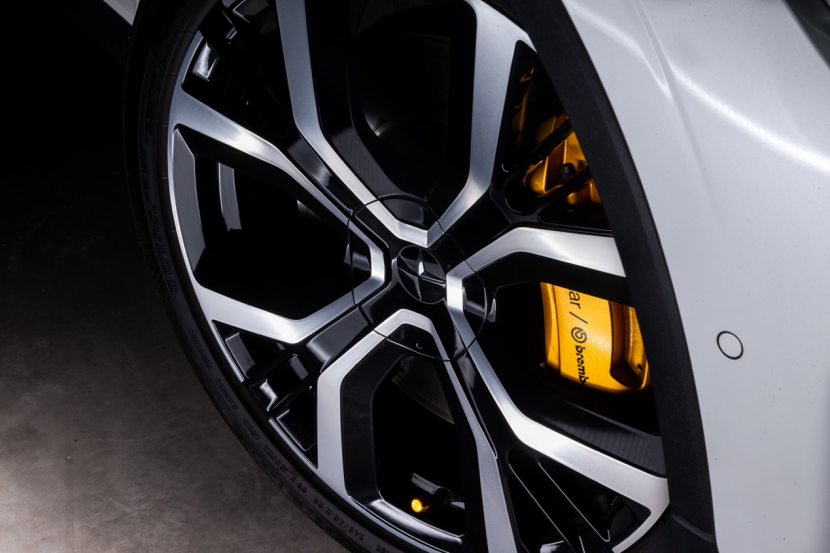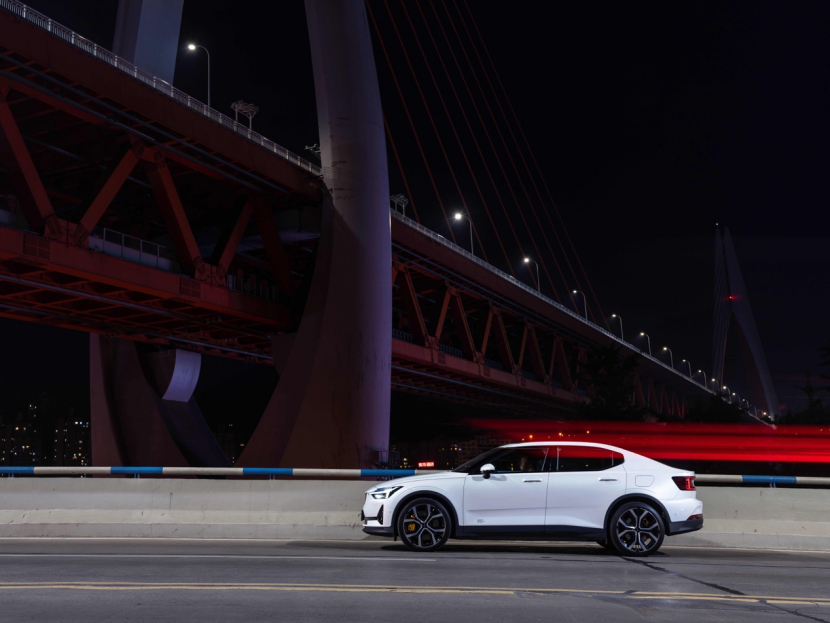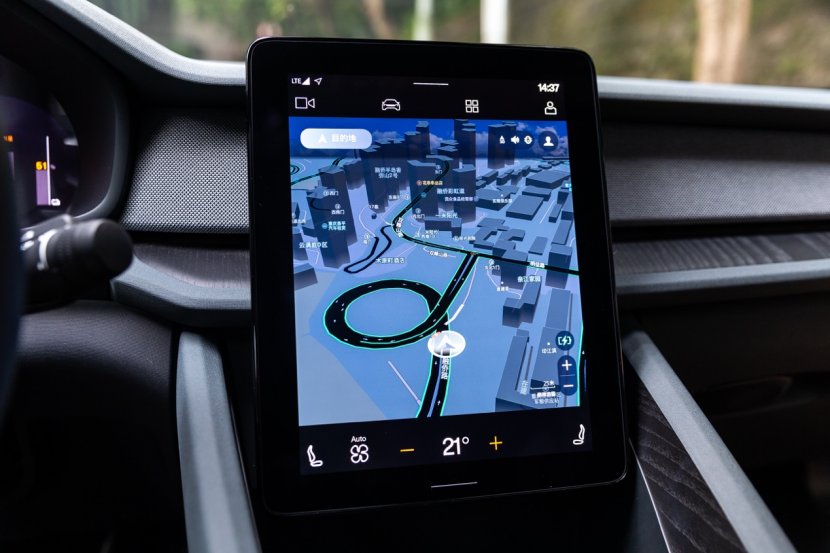Author: Sun Xiaoshu
Editor: Chris
Before this, Polestar CEO Thomas Ingenlath stated that “2021 is a crucial year for Polestar’s major efforts.” In early April 2021, this high-end electric brand jointly created by Volvo and Geely made two major moves.
On April 1st, Nathan Forshaw was appointed as the General Manager for Polestar China and Asia-Pacific Region. Nathan Forshaw previously held senior management positions in the Volvo Group, responsible for strategic development and commercial operations in the Asia-Pacific region, and has rich experience in the development of international brands in the Asia-Pacific region.
On April 13th, the all-new Polestar 2 series of products was launched, with both single-motor and dual-motor versions, equipped with two battery packs of 64 kWh and 78 kWh, respectively, with a total of three models. The NEDC ranges are 485/512/565 km, respectively. Most importantly, the price range of the new Polestar 2 series has dropped to 252,800-338,000 yuan, which is much more affordable compared with the debut version’s price of 418,000 yuan and is close to the starting price of 250,900 yuan for the Tesla Model 3.
The intention behind these two moves by Polestar is very obvious, which is to boost sales in the Chinese market. Therefore, I cannot help but wonder whether the Polestar 2 can reverse the downward trend in the Chinese market and replicate its considerable success in the European market. And the answer can be found from this “Polestar Lab” test drive in Chongqing on a summer night.
“Uncompromising Design”
Design is an important part of a product. Steve Jobs was a CEO who paid great attention to product design. He was amazed by Segway’s balancing scooters, “You have a machine that is a remarkable innovation,” but also criticized the design of the product as “a piece of s***.” Jobs eventually gave the advice to “find the best design company and be sure to create the coolest product that will blow your mind.”
Design is also crucial for cars, but as one of the most complex industrial products in the world, the product design and engineering manufacturing of cars are often at odds, and design is often overshadowed by engineering. Therefore, when Volvo’s former Vice President of Design, Thomas Ingenlath, became CEO of Polestar, I was curious about how a designer in charge of a brand would bring about different products.
Thomas is an advocate of minimalist design aesthetics, and this advocacy is reflected in Polestar 2, which has a unique visual identity that looks clean and tidy from afar, and exquisitely detailed up close.
One of the design concepts behind Polestar 2 is to “subtract visually.” The A-pillars and B-pillars are designed to be hidden, visually merged with the windows. The millimeter wave radar and front camera are integrated into the dot matrix front grille, and the side camera is hidden in the rearview mirror bracket. These are all conventional operations that eliminate visual redundancy.
Putting the brand logo on the body and treating the body with the same color is an application of the design of de-branding luxury brands to cars. On this point, I admire Thomas.
The visual subtraction of Polestar 2 is not simply cutting off design elements, but rather, it is the embodiment of its design sense. From a distance, the taillights of Polestar 2 are just a simple strip of lights, but as one approaches, the taillights stand out as a three-dimensional sculpture on the car body. At the same time, one can see that the body of the car is folded into two planes along the logo line of the brand at the rear of the car. When one looks down at the wheel, one can see that the spoke pattern corresponds to the hammer-like headlights.
This kind of carefully crafted detail, without being ostentatious, is only done by designers who do not compromise or cater to the masses. The Polestar 2 is full of such uncompromising, nonconformist design, such as the frameless rearview mirrors that look expensive, and the logo lights in the hollow gear shift and ceiling.
All of these are designs that are “nothing substantive other than good-looking,” but they come at a high cost, such as the roof glass, which is the only one on the Polestar 2 that is not supplied by Fuyao Glass, but a one-off customized glass made by Polestar.
As Chetan Kotur, the head of Polestar’s Asia-Pacific product team, said, Polestar is a brand that never compromises on design and technology. Admittedly, not everyone will be drawn to this kind of uncompromising and nonconformist design, but it will definitely resonate with those who value good design.Although Polestar is a brand founded in 2017, it has performance DNA as its predecessor was a car modification company named Flash Engineering. Therefore, I have high expectations for the mechanical performance of the Polestar 2.
Talking about Polestar 2, the Öhlins DFV dampers are essential.
Firstly, it must be acknowledged that the damper’s daily usage frequency is not high because only a few extreme performance-oriented users would frequently crouch down to manually adjust it. But this is precisely where the value of the Öhlins DFV dampers lies: the ability to adjust up to 22 levels of softness/hardness provides performance enthusiasts who care more about driving enjoyment with a rich variety of personalized options.
Let’s first talk about the chassis tuning. I think the Polestar 2 has a chassis feel comparable to that of a same-level fuel vehicle, which exceeds my expectations. New forces are at the forefront of electrification and intelligence, which is also reflected in sales. But when it comes to the level of chassis tuning, they always fall behind traditional fuel vehicle manufacturers by some margin.
Both XPeng P7 and NIO ES6 are comfortable enough, but their stability is average in corners, and there is an obvious shaking when adjusting the cornering angle. Tesla has great maneuverability but a hard chassis, sacrificing comfort. To make an EV that balances comfort and maneuverability like the Audi A4L in the same price range is rare, and the Polestar 2 is one such model. This may also be an advantage for traditional fuel manufacturers in accumulated experience in vehicle tuning, compared to new EV players.
Now let’s talk about the acceleration experience. The version I test drove was the dual-motor long-range version with a maximum power of 300 kW, a maximum torque of 660 Nm, and a 0-100 km/h acceleration time of 4.7 seconds. This should be a common performance benchmark for EVs, but what makes the Polestar 2 different is that its throttle response is not just a simple linear one.
The initial pedal response of the Polestar 2 is not aggressive. The kind of strong power of an EV does not immediately come through. You might feel like it’s not a high-performance EV, but in the latter half of the pedal stroke, the suppressed power is fully released, bringing with it the acceleration pleasure of an EV.
The Brembo calipers on the front wheels are a kind of safeguard for the Polestar 2’s driving safety. After all, it is a performance vehicle that can break through a 0-100 km/h speed in just over five seconds, and its weight exceeds two tons, which will pose even harsher brakes challenges.
The kinetic energy recovery intervention logic of Polestar 2 is also worth praising, as it allows for light, heavy, or disabled modes. Yes, you can disable the kinetic energy recovery feature on the Polestar 2. This caters to users who are not used to the kinetic energy recovery feature and provides them with a buffer to adapt gradually, reducing the cost of switching. Even with the kinetic energy recovery feature enabled, the light mode intervention is not sudden; rather, it is similar to releasing the accelerator pedal of a fuel-powered car, where the braking process gradually strengthens, effectively enhancing driving comfort.

“Intelligent: Focused on Safety”
Safety is an important symbol of Volvo. As the jointly developed electric brand of Volvo and Geely, Polestar naturally inherits this symbol. Polestar 2 is one of the safest electric cars tested by the European New Car Assessment Program (Euro NCAP), and its unique features, such as the “SPOC” module and the Front Lower Load Path (FLLP) technology, ensure the structural integrity of the battery pack in case of an accident.
However, what I am more concerned about is how Polestar 2 ensures safety at the level of intelligence.
Nathan Forshaw and Chetan Kotur both stated that “(Polestar) should provide advanced driving assistance at the right time.” It can be seen that Polestar’s requirements for ADAS are to be mature and reliable, rather than being radical and forward-looking.
Intelligence is mainly divided into driving assistance and intelligent cockpit. Let’s first talk about driving assistance. In terms of hardware configuration, Polestar 2 has a total of 3 radars, 12 millimeter-wave sensors, and 5 cameras (including 1 front-facing camera and 4 surround cameras). Based on these hardware configurations, Pilot Assist can integrate map information and provide navigation assistance in the speed range of 0-130 km/h.

The blind spot monitoring system is an advanced driving assistance feature that I strongly felt during my test drive. During the drive, I would unconsciously talk about this Polestar 2 with the passengers, which distracted me from noticing cars approaching in my blind spot (of course, this behavior is very dangerous). In this situation, the Polestar 2 automatically applies a steering force to bring the vehicle back to a safe position.Let’s talk about intelligent cockpit. It is well known that Polestar is the world’s first brand to adopt native Android Automotive OS. The most intuitive feedback in actual use is that the operation is smooth. The reason why Polestar 2’s OS is smoother than most car systems on the market may be that most of the apps we use while driving have versions based on native Android development, so there will be no lag like other car systems when running on Polestar 2’s native Android Automotive OS.
On the other hand, Polestar 2 has optimized the system interface for driving scenarios. For example, the onboard navigation is optimized by Google with very simple map information to avoid interference from irrelevant information while driving.
On February 19, 2020, Polestar announced its future concept of Human Machine Interaction (HMI), and announced deepening cooperation with Google. Thomas also stated that “Polestar has always been open-minded, actively cooperating with experts in the Internet industry, and dedicated to the integration of intelligent vehicles and the Internet technology.” As for China, Polestar chose to access services such as Amap, iFlytek, Huawei Hi-Car and Tencent Ai Qu Ting.
Polestar and these service providers have made deep open cooperation, for example, Amap can intervene in deeper levels of the system and automatically activate 3D real scenes in complex road sections, such as complex interchanges in 8D Chongqing city, or develop exclusive functions for electric vehicles, such as grasping the remaining battery power and displaying charging pile information along the way based on the power, when we need to charge, we can set the passing charging piles as waypoints with one click.
On the high-speed section at the end of the test drive, we had the opportunity to experience the Pixel LED headlights. Polestar’s front headlight technology can recognize vehicles in front or oncoming lanes through the front camera, adaptively adjust the distance between high and low beams, as well as the lighting height and direction, to avoid glare interference to vehicles in the same or opposite direction.
Through the experience, the effect of the Pixel headlamp group is still good. The 84 independently controlled LED light sources can take care of other vehicles while ensuring the illumination of important road information. Intelligent LED headlights are not a novel technology, but they are not common in the level of Polestar 2.
“Conclusion”▎The Polestar 2 is an interesting car that exudes strong personality with uncompromising design; while lacking advantages in range and performance parameters, it demonstrates expertise in handling tuning; its intelligence is clearly focused on safety configuration, and once you fall in love with it, you will never want to let it go.
If you value design, enjoy handling, and care about safety, the Polestar 2 will be a good reference option, not to mention that its entry price has already fallen to 252,800 yuan.
This article is a translation by ChatGPT of a Chinese report from 42HOW. If you have any questions about it, please email bd@42how.com.
